- Home
- HAIR EXTENSIONS
HAIR EXTENSIONS
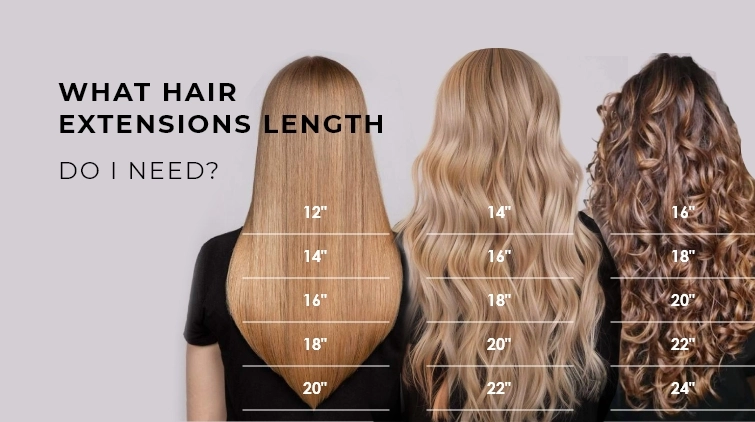
HAIR EXTENSIONS
Hair extensions come in a wide variety of forms, as do their application techniques. Some hair extensions are temporary, meant to be worn every day, and can be applied at home by an individual in a matter of minutes. Others are semi-permanent and need to be applied by a professional. At weddings, proms, and other significant life events, hair extensions are also frequently used. If you have a certain hairstyle in mind but aren't quite able to pull it off with your natural hair, think about getting hair extensions or getting advice from a reputable hair stylist about how they can assist.
What are Hair Extensions?
The following goals can be accomplished using hair extensions:
- To get longer hair
- To achieve thickness of hair
- To include colour
A person can add length, volume, or colour to their natural hair by attaching fake or natural hair strands to it. They are frequently used to create a variety of appearances and hairstyles in the fashion and beauty industries. The materials used to make hair extensions might range from synthetic fibres to real hair or a mix of the two.
Types of the Hair Extensions
- Clip-in Add-ons
- Tape-in Extensions
- Sew-in or Weave Extensions
- Micro-link or Micro-bead Extensions
- Fusion or Bonded Extensions
- Mini Tubes
- Easy Shrinks
- Nano Ring
- Hidden Weft or Hidden Weave
1. Clip-in Add-ons
These are clip-on temporary hair extensions that blend nicely with natural hair. They are a popular option for people who desire a quick change because they are simple to attach and remove.
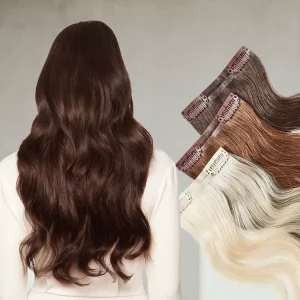
2. Tape-in Extensions:
- These are pre-taped extensions that are placed in between natural hair portions. They can remain in place for a few weeks before needing to be moved; they are usually semi-permanent.

3. Sew-in or Weave Extensions
Using this technique, hair extension tracks are sewed into the natural hair’s braided parts. Generally lasting longer than clip-ins, this kind of extension needs to be applied and removed by professionals.
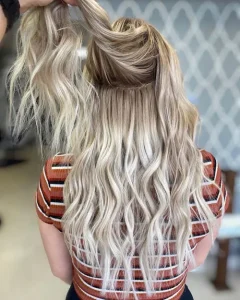
4. Micro-link or Micro-bead Extensions
Tiny metal beads or links are used to join small parts of hair extensions to small sections of the natural hair. This approach is regarded as semi-permanent.
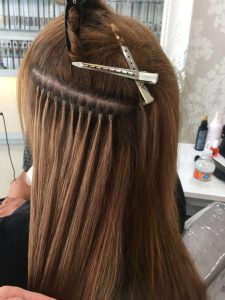
5. Fusion or Bonded Extensions
Keratin bonds or adhesives are used to fuse individual hair extension strands to the original hair. This semi-permanent technique can be used for several months.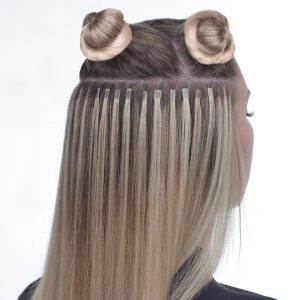
6. Mini Tubes
Mini tubes are quite little and agile, mini copper tubes seem attractive when worn. Compared to typical micro rings, they are significantly smaller and thinner, but they are still large enough to put onto stick-tip hair extensions. These tiny copper tubes also have a somewhat longer body, which improves their ability to cling to the bond. Thus, a far more durable hold is ensured.
They perform admirably both when putting fan lock hair extensions and pre-bonded stick tip hair extensions.
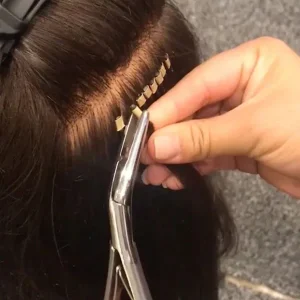
7. Easy Shrinks
Using a tube that has Keratin inside of it and heating it to create a bond between the natural and hair extension, the “Easy Shrink” method entails attaching the hair extension to the client’s natural hair. Because the fused sections only need to be heated again, the tube glides straight off without damaging the natural hair, making it easy to remove the extensions as well.
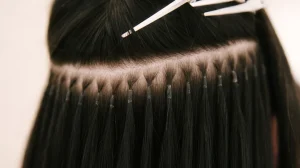
8. Nano Ring
Nano ring/tip hair extensions consist of microscopic, permanent, keratin-bonded hair pieces that are tipped with a thin metal wire and secured to the hair with a tiny metal ring. They are the least destructive option available because they are applied without the use of heat or glue. One of the simplest and least destructive hair extension techniques available is Nanos, which don’t require heat or glue. The Nano hair extension tip is inserted into a tiny metal ring or bead lined with silicone, and your own natural hair is threaded through it. The two are then firmly clamped together with pliers, securing your own hair in between. Additionally, by just unclamping and applying a fresh ring every 6 to 8 weeks, they may be reused and moved, making this.
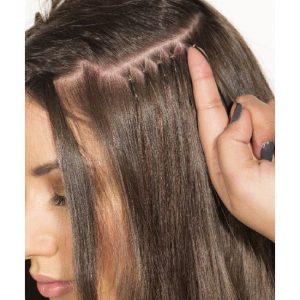
9. Hidden Weft or Hidden Weave
Using a Beaded Weft Track System to construct a track, flawless invisible weft hair extensions are applied to the hair in rows. After being applied to the scalp, the wefts are beaded into the hair. After that, you trim the extension and skilfully incorporate it into your own hair. Installing invisible weft hair extensions involves these steps: Depending on the required volume, figure out how many rows of hair are required for the extensions. Partition your hair into sections and pass each section through a tiny bead to create the beaded track. Continue doing this in increments of one inch until the entire row is covered with a track of your natural hair.
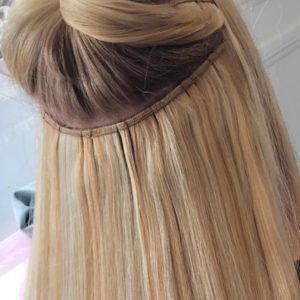
Contact ino
- Xpressionsaesthetics@gmail.com
- 01582 260726
- 8-10 Bute Street Luton LU12BU
© Copyright 2024 by
